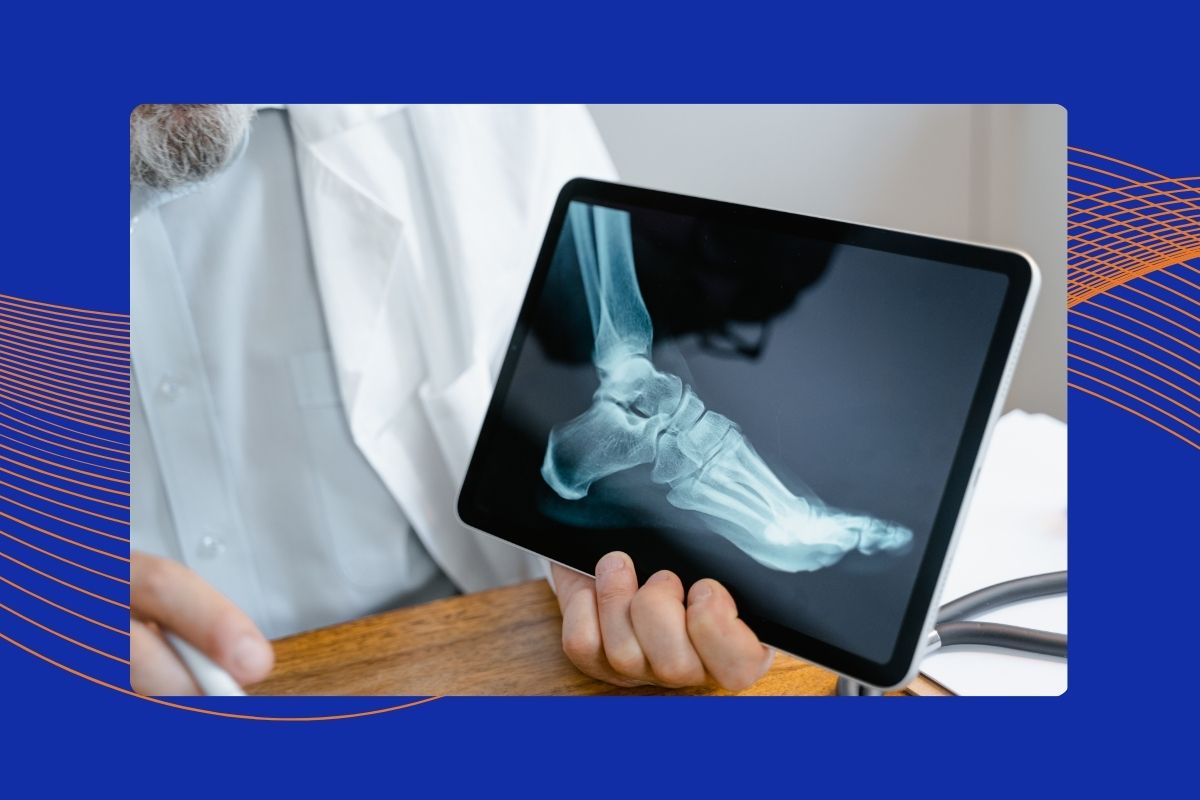A broad class of medical disorders, bone diseases affect the growth and strength of your bones. These conditions can occur for many reasons, ranging from the unavoidable (i.e. your genes) to the preventable (i.e. your diet). Although not every bone disorder is avoidable, recognizing the warning signs of a bone disease is half the battle.
So, without further ado, here are the six most common forms of bone diseases:
Osteoporosis: An American Epidemic
Affecting 54 million Americans, osteoporosis is the most common form of bone disorder in the United States.
Osteoporosis occurs when a process known as bone remodeling goes a little bit haywire. During bone remodeling, our bodies replace worn-out, injured bone with healthier, sturdy bone. In this manner, our bones can remain strong and free of injury. However, if the stage of bone loss begins to outpace the phase of bone growth, then the net effect is a loss of bone mass. This creates weak bones that contain many small pores, like a slice of swiss cheese. (In fact, the root word osteo- means bone; and -porosis means spongy.)
Needless to say, porous bones can fracture easily. Bumping into an end table, twisting the wrong way, even sneezing can cause a fragile bone to break!
Furthermore, if you are a woman (past the age of menopause) or a senior (age 70+), then you should keep a watchful eye out for this condition. Spine and hip fractures are dangerous consequences of this disease that can lead to the need for long-term medical care.
Osteoarthritis (OA): Protect Your Joints
Affecting 27 million Americans, osteoarthritis (OA) occurs when the impact of everyday wear and tear begins to break down your joints.
In a healthy joint, cartilage provides a slippery barrier between your bones. This allows the vertebrae in your spine to glide past one another without injuring the edges and tips of your bones. However, OA causes the cartilage that lines your bones to erode, leaving the edges of your bone exposed to friction.
Not only does this grinding of bone-on-bone cause pain, but it also encourages the growth of bone spurs. Bone spurs are tiny outcroppings of bone that form in the place of cartilage to protect your bones. Although not painful in and of themselves, bone spurs can pinch nearby nerves, leading to symptoms such as numbness, tingling, and pain.
Paget’s Disease of Bone: A Cousin to Osteoporosis
Paget’s Disease may just be the most common bone disease that you’ve never heard of. If you don’t count OA (which mainly affects the joints), then Paget’s Disease is the second most common bone disorder in the U.S.
Like osteoporosis, Paget’s Disease of Bone occurs when the bone remodeling process goes awry. However, unlike osteoporosis, the process of bone regrowth in Paget’s disease begins to outstrip the cycle of bone loss.
You might be asking… Why would extra bone growth ever be a bad thing? But, because the bone tissue that the body creates in Paget’s Disease happens to be inferior in quality, serious bone issues can arise. For example, in the spine, this overgrowth of substandard bone can lead to fractures or pinched nerves. In the skull, it can cause migraines or hearing loss. And, in rare cases, Paget’s Disease of Bone can even lead to bone cancer.
Osteomalacia: The “Soft” Bone Disease
Osteomalacia usually occurs when the bones do not receive enough Vitamin D from our diets or the sunlight. However, certain disorders, like Celiac disease, can also make it difficult for our bodies to absorb enough of the right nutrients. When this occurs, our bones can become soft and bow underneath our weight.
In children, this disorder is also known as Rickets. But, because the dairy industry now fortifies milk with Vitamin D, new rickets cases have decreased steadily in numbers since the 1930s. However, osteomalacia continues to affect nearly 4% of the elderly.
In addition to bowing legs, osteomalacia can cause spinal fractures, pelvic pain, and heart problems.
Osteogenesis Imperfecta (OI): The “Brittle” Bone Disease
OI refers to a group of 8 rare genetic disorders that can affect the integrity of our bones. Patients with OI often have a defect in a gene that directs how the body produces collagen. (Collagen is a form of connective tissue that composes 90% of the bone matrix, the fibers that bind your bones together.)
As such, patients with OI have excessively brittle bones that fracture easily under pressure. In fact, due to respiratory problems, some forms of OI can be fatal at birth. However, people with Type 1 OI (the most common and mildest subtype of OI) can lead very active, healthy, and long lives.
Multiple Myeloma: Plasma Cell Cancer
A form of cancer that affects your white blood cells, multiple myeloma causes abnormal cells to build up in your bone marrow. As these cells multiply, they can invade actual bone tissue, causing spinal tumors. In general, your spine is one of the most common sites in your body for secondary tumors. Because your spine spans the length of your torso, tumors from the breast, lung, and kidneys can easily spread to your vertebrae. Signs of Multiple Myeloma may include weakened bones, anemia, fatigue, or an increased susceptibility to infections.
Worried that you might have a bone disease? Dr. Charles Gatto of The Advanced Spine Center specializes in disorders that affect bone structure and integrity. For medical advice that you can trust, contact our fellowship-trained spine surgeons today!
